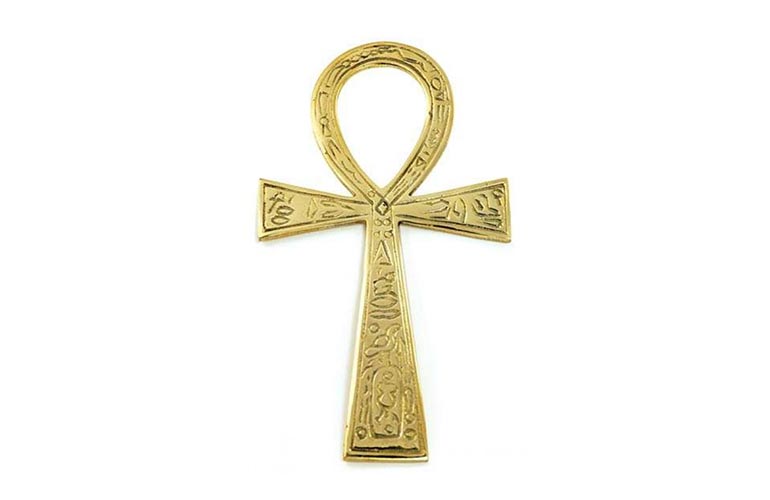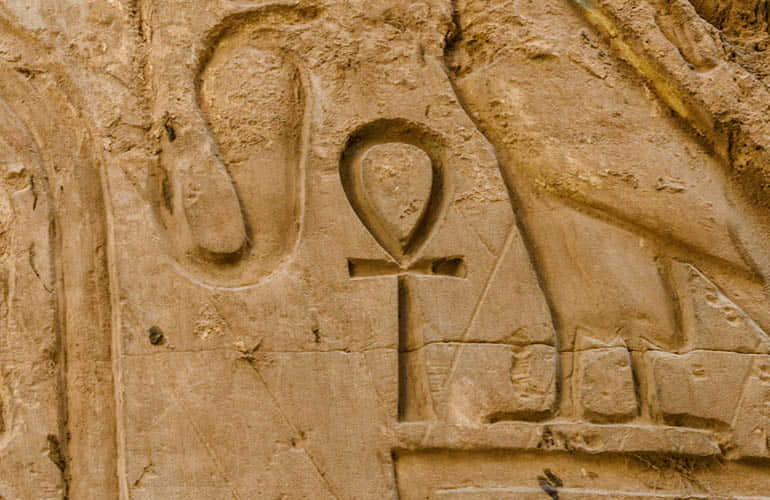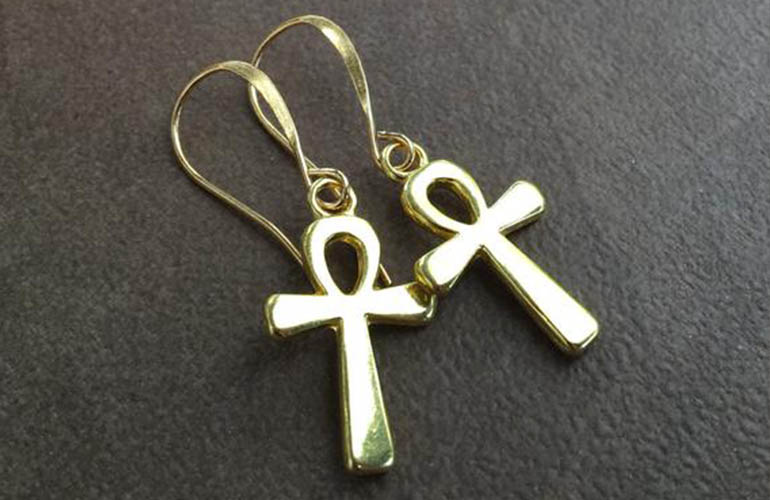The meaning of ankh and What Does It Symbolize?
- The Egyptian cross, also known as Ankh, was originally an Egyptian hieroglyph used to represent the word “life”. By extension, this cross became primarily a symbol of life.
- This cross was also placed on the lips of dead kings, bearing in mind that according to the mentality of ancient Egypt, death did not mean the end, but was merely a transition to the afterlife, to eternal life.
- As is usual with many symbols of religious or spiritual origin, there is no single meaning for this symbol. Throughout history, this symbol and its variations have been used by different cultures and religions that have given it different meanings.
- Among the Egyptians, it was mainly a symbol of life or immortality. In this sense, it also had a certain relationship with death and the rites associated with death.
- The symbol of the Ankh has also been interpreted as a symbol of balance between opposing forces, for example, between masculinity and femininity. It can also represent joy, energy, and fertility.
- One of the interpretations of the meaning of this symbol relates it to sexual union and therefore to fertility and life. This allows us to understand this symbol not only as a symbol of present life but also as a symbol of future life and immortality.
- There is another theory, which related the T, of the lower part of the cross, with male sexual attributes, while the upper part, the handle of the cross, the uterus or the woman’s pubis, symbolizing the reconciliation of the opposites, unity between both sexes and above all, reproduction and therefore, the cycle of life. [ Read the full article about Egyptian Symbols ]

Describe of the Ankh symbol
Ankh, It is formed, starting from the top, by a circle, symbol of that which has no beginning and no end, and which represents the celestial world, the spirit of Ra, the Sun God for the ancient Egyptians; this circle also serves as the handle of the key, from where it is carried by the gods who carry it. It rests on the Earth, like the Sun on the horizon, when it sets or rises.
This Key also opens the doors of the world of the dead and penetrates the hidden meaning of eternity. In funeral ceremonies, taken by the handle, it is the key to the doors of the tomb and, placed between the eyes, it is an obligation of secrecy.
It can also be seen represented as a magical bond that brings together all things in the knot of the center and makes it possible for them to remain united. It is then the so-called Knot of Isis, the notion of rejoining,
Isis, as the second person of the main Egyptian trinity, formed by Osiris, Isis, and Horus, is the divine mediator, the Goddess of Love and Life, who will gather, as the myth tells us, the scattered pieces of her divine husband Osiris, a symbol of the Mystery. Likewise, man accesses superior knowledge by developing his will, in an effort to unite with his inner being, his true Being, where the consciousness of his own immortality dwells
Within the Egyptian culture, the symbol of the Ankh was also used in all kinds of amulets. The amulets were associated with the attributes of the god or virtue they represented. In this case, the Ankh amulet was used to represent life. The Egyptians used them in their daily life but also as an offering for the dead to accompany them in life after death.
The Key of the Nile Symbolizing the Union of Man and Woman Creating Life
The ankh represents the union of man and woman and symbolizes the creation of life through this union. According to one of the theories about the origin of the ankh, the symbol could be the combination of the male and female symbols representing Osiris and Isis, the cross and the oval, respectively. It was believed that the union of Osiris and Isis flooded the Nile every year and gave life to Egypt by providing fertility. That is why the symbol is also known as “the Key of the Nile” and why it is considered to represent the union of heaven and earth.
Where the Ankh come from?
The origin of the Ankh symbol is not entirely well known, but it can be seen in the Egyptian hieroglyphic writing. The Ankh was taken by the Hebrews from the Egyptians and was introduced to the language by Moses, who was instructed in the wisdom of the priests of Egypt along with many other mystical words.
Ankh Facts
In some of the ancient Egyptian hieroglyphics, the king was depicted as being fed with small ankhs in a way that could be interpreted as “breathing life into the king”. That said, some hieroglyphs present the king and two gods washing him with a stream of small ankhs. In this context, the ankh symbol represents the purifying power of water, although some experts suggest that the king in the inscription is washed to regenerate his life.
This story was a turning point, because, from this moment on, the ankh began to be seen, as an amulet, as a key that supposed that the dead could open the door to the afterlife and was associated with the pharaohs, considered practically divinities at the time. Moreover, with the arrival of Christianity in Egypt, in the second century after Christ, the Copts adopted the cross as the symbol, a variant of the cross, which we all know today. Although initially, only the Pharaohs could wear it, in the New Empire its use was allowed to the entire population of the country.
Other theories suggest that it represents air and water as important elements for generating life. It is also considered to be the key to the mysteries of nature. On the top, it has a kind of circle or oval, which has no beginning, no end and symbolizes the heavenly world, the god Ra, the sun.
But above all, the Egyptian cross or Ankh symbolized the respect for the dead of the Egyptian civilization. Respect that has reached our days, throughout different civilizations, through The Book of the Dead, one of the main works that have come to us from Ancient Egypt.

Modern uses of The Ankh
The Ankh, a cross crowned by an oval, refers to the reconciliation of the opposites (feminine – masculine) and also to the symbol used to designate the planet Venus, a reason that makes it an element of numerous feminine cults.
The Ankh is the symbol of transformation or transmutation, while for Coptic Christians it is one of the iconographic representations of their faith. Something similar happens with the Irish and Armenian crosses, presumably based on the design of the Ankh.
This symbol can be found made of metal, metal alloys, gemstone carvings, crystals or surfaces of wood, clay or stone. The material depends on the use it will be given.
its recommend that metal Ankh’s be used as personal amulets, while wood, clay or stone carvings are more suitable for protecting the home. Likewise, an Egyptian cross carved in glass can be an excellent health talisman.
In addition to being a powerful personal or home amulet, it is possible to use the Ankh in meditation exercises, mainly aimed at connecting with spirituality or divine healing energy.
To do this, the practitioner must be comfortably dressed, without any garment that puts pressure on his or her body. Similarly, he must eliminate any distractions.
Meditation begins by concentrating on the breath (take 3 deep breaths and then let your body breathe on its own), when you feel you are focused on the present moment, visualize white light around you.
Then, you begin to glimpse in your mind the figure of an Ankh or Egyptian cross of pure white light, emanating vibrations of peace and health towards you. Receive the energy with gratitude.
This exercise should not take longer than 5 minutes. Return to the present moment, again focusing on your breathing.






